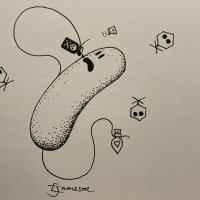
Cryptic Prophage (phage 🧬🪤 in 🦠)
@crypticprophage
TAs 🛑 phages ('96), phages ➡️ persisters, E. c. CRISPR 🛑 cryptic prophages, indole=interkingdom signal, AI2 incr biofilm & TqsA exports (Prof. Thomas K. Wood)
ID: 1494191610225168391
https://sites.psu.edu/woodgroup/ 17-02-2022 06:07:15
535 Tweet
672 Followers
194 Following
















